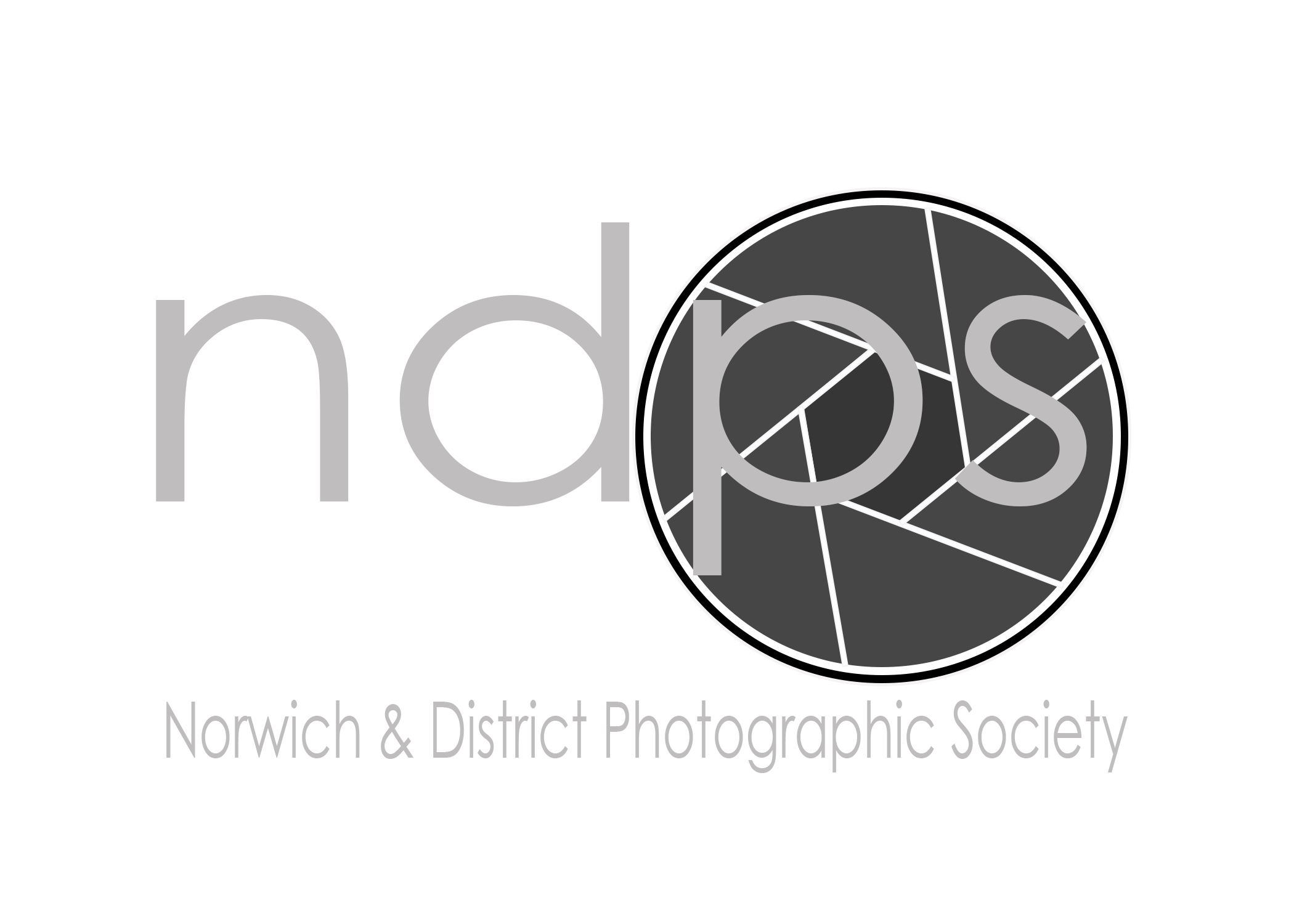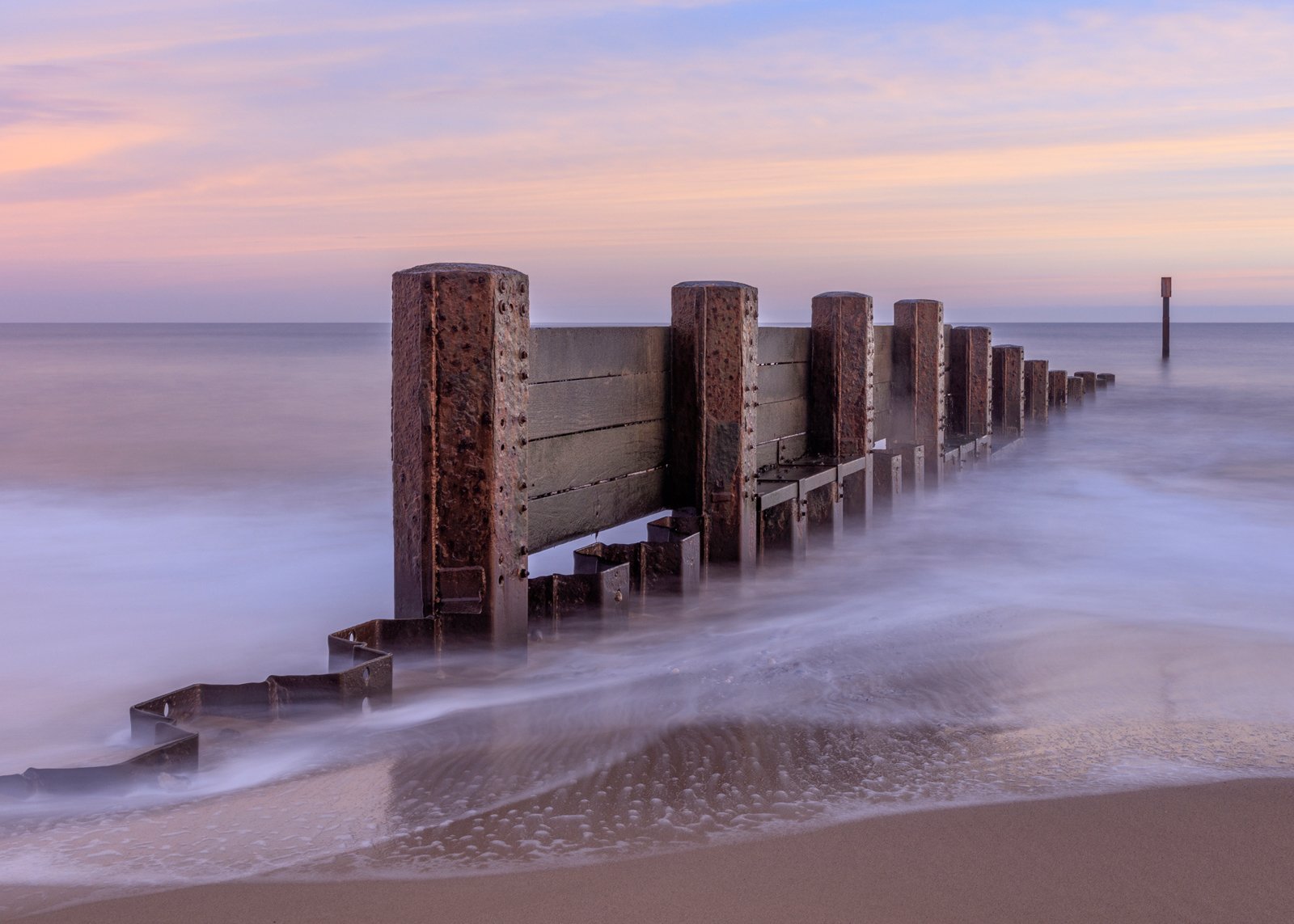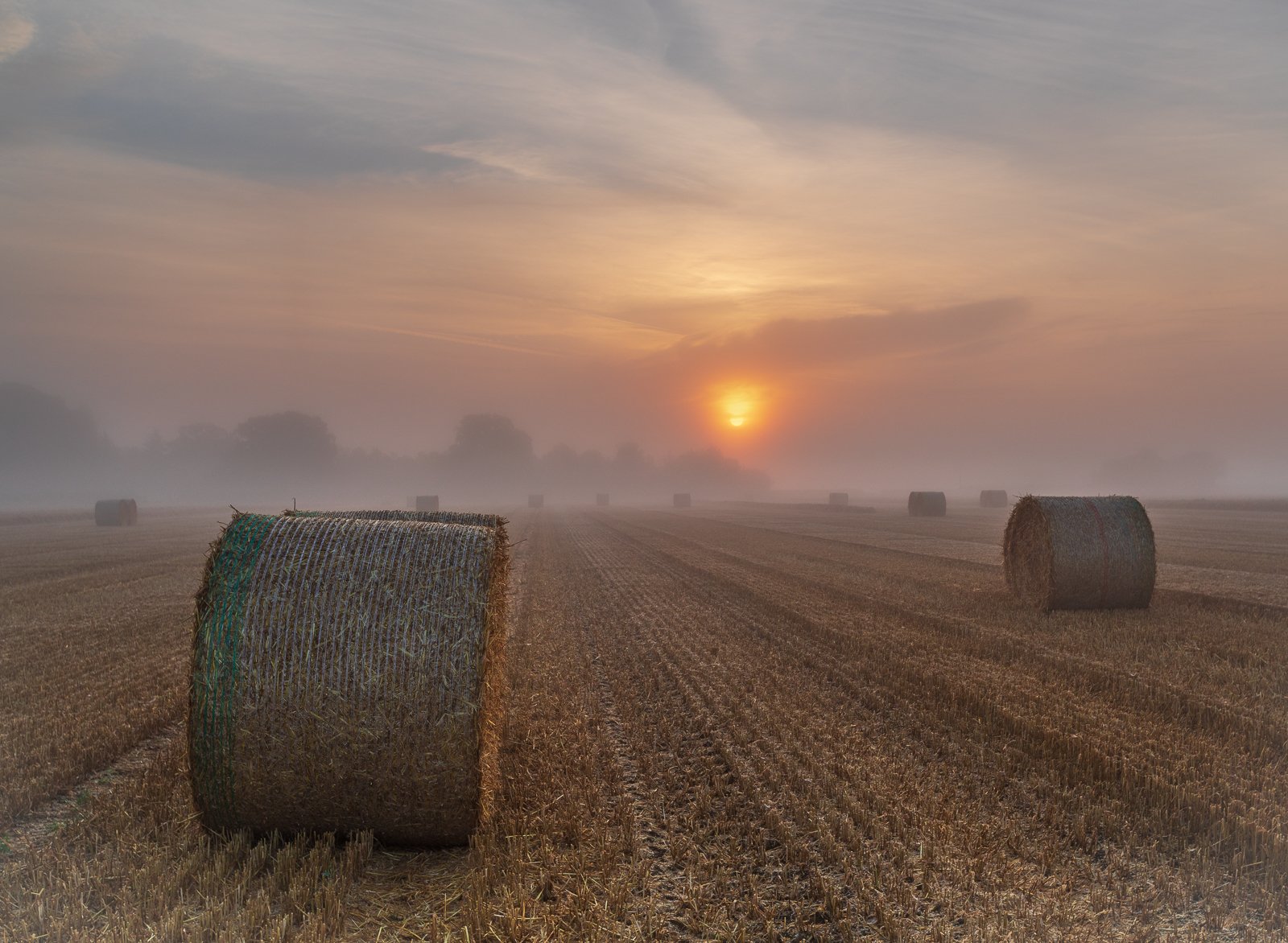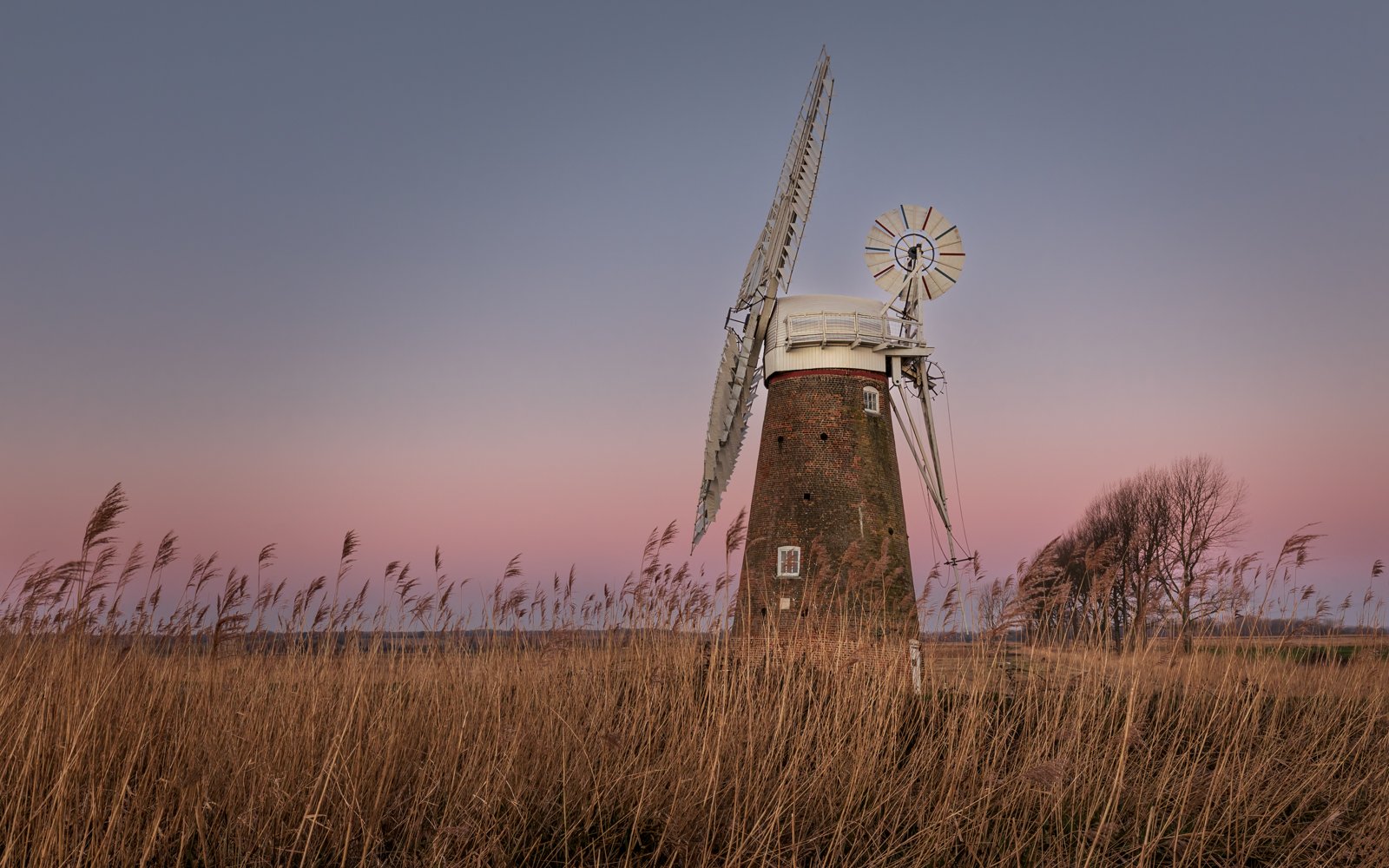Areas to be explored Hickling, Horsey, Winterton beach and Caister beach
This winter workshop led by Ruth Grindrod will take us to both Broadland scenes and coastal landscapes. The trip will begin with a 90 min journey on Hickling broad. This is a private boat tour and it’s hoped dawn will emerge and deliver some great colour but as you all know nothing can be guaranteed! After the dawn boat trip, we will drive to Horsey where time can be spent not only shooting the mill but also more intimate aspects of the landscape eg. reeds, winter leaves, reflections etc. People can also walk to Bromsgrove Mill if they wish to.
Toilets and good parking are available at Horsey Mill.
The aim of the one day workshop is that each participant comes away with one traditional landscape shot, plus a long exposure and an intimate or abstract shot.
We will then move onto Winterton beach which provides us with a huge beach to experiment with long exposures as well as more traditional landscapes from the dunes. If you have not got ND filters, don’t worry as Ruth will bring some for people to use. The day will end at Caister for sunset and hopefully you will be able to capture a sunset as pictured above by the rocks. We may be able to shoot the groynes too depending on tides and time.
Each participant will need to prepare for all weathers and ensure they bring a packed lunch and a drink. We will be outside all day and the coastal locations can be very windy and cold. You will need a sturdy tripod plus ND filters and grads if you have them. Do not forget to bring camera batteries too plus any other pieces of kit you like to use.
The workshop is limited to 10 participants and will cost £85 each payable in advance. Payments are non-refundable unless we are not allowed to travel for any reason
Note - As during last year’s workshop Ruth will be on hand to provide 1-2-1 advice and help as need be and of course if any of the coastal locations are inaccessible for any reason we will swap to another nearby location.
The Landscape Group meets regularly throughout the year. The exact location of the shoot is decided about four weeks beforehand so that we can consider the local tide times out on the coast and also the forecast weather conditions we are likely to encounter. Even then sometimes things do not go to plan and the plans can change even in the last few hours before to meet time. For that reason it is recommended that members check the website for any last minute changes before travelling.
East Anglia is a special place that is famous for its big skies. The predominantly flat landscapes are however, not easy to photograph, but the lack of elevation means the first and last light of day lingers a little longer – but when it all comes together it can be magic…!
The North Norfolk Coast – begins and ends with cliffs, rising in the west with the striped cliffs of Hunstanton and ending with the those that undulate from Weybourne to the old seaside resort of Cromer with its ornate pier, sandy beach and crab fishing fleet. In between there is more than forty-miles of flatter coastline that offers endless opportunities for photographers prepared to explore the patchwork of creeks, salt marshes and beaches.
The Broads and East Norfolk Coast is a unique landscape of lakes (broads), grazing marshes, reed beds and rivers dotted with windmills and quaint villages that are bounded on its eastern edge by windswept sandy beaches. The most northerly sand dunes however, make way for crumbling cliffs and the advancing costal erosion that is occurring particularly around Happisburgh.
Also in reach is the Suffolk Coast stretching from Covehithe in the north to Bawrdsey in the south. Meandering inland from the coast are the slow, sweeping estuaries flanked by reed beds and saltmarshes of the rivers Deben, Ore (later becoming the Alde) and Blyth. Also of interest to photographers are the towns of Woodbridge and Framlingham with its medieval castle.
From September through until the clocks go forward to BST we meet early on a Sunday morning about one hour before sunrise and after the shoot around 10:00am it is not unusual for members to head off together for a well earned breakfast. After, the clocks go forward we move to holding the shoots on a Saturday evening when it is easier to stay out later..! Around December and January we also try to plan to visit those locations further afield as sunrise is later at this time of year.
Please remember, The Landscape Group can only be as good as the input made by its members so if you are willing to organise or lead any kind of event that you think will be of interest to members, please step forward. Please don’t be shy – all offers of help will be greatly appreciated…!
About the NDPS Landscape Group
The Landscape Group’s objectives are simple – to encourage members who wish to take part improve their landscape photography, enhance their understanding of the equipment and techniques available. Learn through collaboration with fellow members and have fun.
Landscape is one of the oldest art forms with many famous landscape painters such as John Constable, Jacob van Ruisdael and J M W Turner. Since the invention of the camera landscape photography has become one of the most prolific forms of photography, reaching critical acclaim in the hands of photographers like Ansel Adams and Joe Cornish to name but two.
Latterly techniques such as intentional camera movement (ICM) and multiple exposures have enabled photographers to come closer to the ephemeral images painted by Turner in his later period and the use of perspective control or tilt/shift lenses has allowed digital photographers to emulate the depth of focus and perspective control long achieved using traditional large format cameras. The use and understanding of filtration is another area in landscape photography that has advanced considerably in the last twenty years and nowadays it is unusual not to find a set of neutral density and graduated filters taking up valuable space in the landscape photographer’s bag.
Since it began in 2016 the landscape group has developed range of activities support members of the Society in developing their skills in creating landscape imagery, whether this is with a traditional or more contemporary approach.
Please remember, our group can only be as good as the input made by its members so if you are willing to organise or lead any kind of event that you think will be of interest to members, please step forward. Please don’t be shy – all offers of help will be greatly appreciated…!




